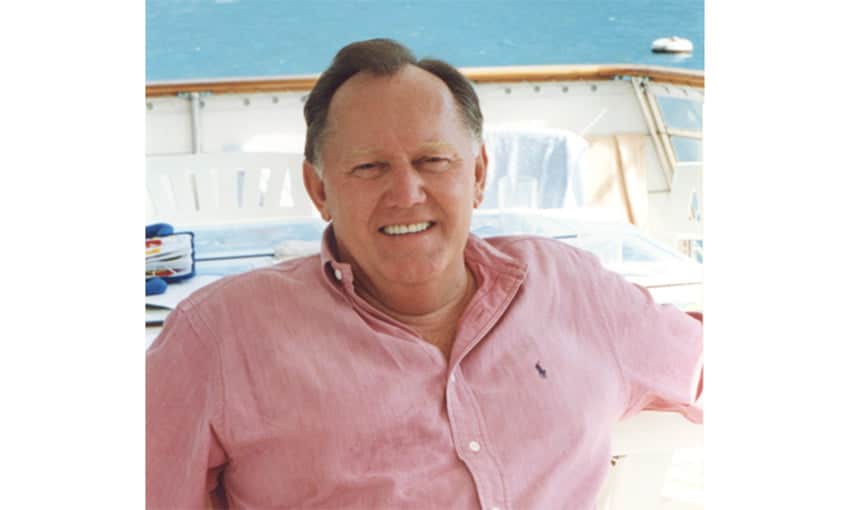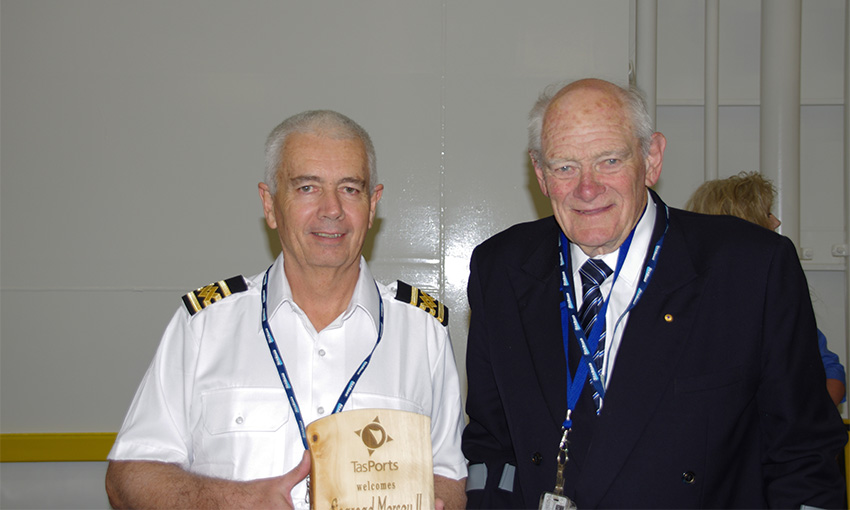IT is with great sadness that we report the passing of a giant and pioneer of the port industry.
Peter C. Cannon from Sydney Australia passed away on 8 August 2023, just a few weeks short of his 84th birthday.
Peter was the designer behind many of the innovations used today in the port industry. These included amongst many developments, the twin lift spreader, and the rack-pinion elevators in particular, on quay cranes.
Peter Cannon had a lifetime of experience designing and building heavy materials handling equipment. Upon completion of his engineering training, he worked as an engineering designer of machine tools and food processing equipment together for several years with Australia’s leading consultant engineer James Julian McGuire.
Peter started the company Altikar Pty Ltd in Sydney in the early 60s, designing cranes for the steel mills and the aluminium industries then they designed the first luffing, self-leveling, self-erecting tower-cranes and other specialised construction handling equipment.
Later Altikar commenced manufacturing and became a member of HEMA (Heavy Engineering Manufacturers Association). The company designed the cranes that erected the Twin Towers in New York and designed and also built the crane that erected the 309-metres-high Sydney Centrepoint Tower.
Altikar was invited to design port cranes by P&O to handle boxes at the beginning of the idea to transport general cargo using “boxed containers” between the UK and Australia, which evolved into the original portside crane design. The system is still used worldwide today. The company also introduced the first Thyristor regenerating drive cranes partnered with Siemen’s electrics and also invented the first telescopic spreaders and rack-pinion driver’s elevators, which are still used on quay cranes and power station high chimney stacks. They manufactured many portside or quay cranes, RTGs, straddle carriers, tugs, spreaders and lifts for various leading terminal operators worldwide.
In the late 70s the Electruck company was born and produced some electric vehicles ahead of public acceptance of the system, it then concentrated on portside cranes and spent years trying to automate RTGs with in-ground, electrical guidance systems this with great success. Electruck acquired an electrical contracting company called Kennedy-Taylor in the 1990s, and became known as ECTEC, contracting (over and above the port industry), large electrical projects such as the lighting system for the Caufield race course in Melbourne and the entire electricals for Sydney Olympic Park.
Upon retirement from the port industry, Peter spent several years building high-quality super yachts; during that period, he built three 40-metre-long super yachts.
Since then, Peter had focussed on developing an automatic, hi-density, random access storage systems for ISO containers for ports and terminals. Peter believed that full automation could only evolve as a direct result of random accessibility. As the result, over the past few years, he directed his experience to developing a simple method of high-density storage of containers to allow direct and random access to all ISO standard container sizes to allow the container terminals to be fully automated using simple, proven, efficient, container handling methods combined with modern digital technology. He called this system the Multistaka System. He has designed and registered patents for the system in several global jurisdictions (pending patents) and was working on marketing his design until the last days of his life.
Away from business, fishing was one of Peter’s life-time hobbies, and he spent his spare time trying to catch the big fish with his daughters whenever he could. He once succeeded in catching a prize-winning marlin in Hawaii.
Peter is survived by his wife Sue, and daughters Kate, Sarah, and Stephanie.
The port industry will miss his brilliant technical mind, his drive to achieve, his happy nature, and for those who had the chance to know him, they will miss his friendship.
We offer our condolences to his family and friends.
By Edouard Atichian





